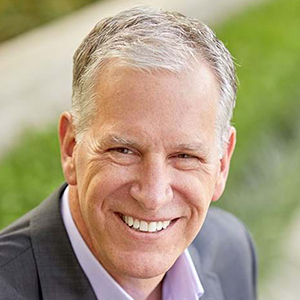

Four Leadership Trends Bringing Hope to 2022
The beginning of 2022 looks a lot like where we were back in January 2021, but I’m feeling more hopeful for the year ahead. The pandemic is a long haul, and I recognize that the next several months could be tough for many around the world. But it’s also forcing leaders to challenge their assumptions, communicate more frequently and creatively, run an evolved workplace, and give everyone — employees, customers, stakeholders — a little grace. Being challenged like that is a GOOD THING.
And we’re collectively rising to the challenge in new ways. Brands are rethinking their supply chains, restaurants are pivoting to delivery-only models, entertainment brands are finding new ways to get content to consumers, and at a new scale — Netflix’s “Red Notice” had a bigger viewership than “Avengers Endgame” and launched only on the small screen. Ed Sheeran, Adele, Taylor Swift and other musicians have learned how to reach global audiences in new, bigger and bolder ways than before. And TikTok had more visits than Google. The silver lining of the pandemic may be a radically reimagined consumer landscape, with technological innovation leading the way across infrastructure, health, supply chains, consumer experiences, retail entertainment and so much more.
With that in mind, here are four lessons to help leaders build brands for the future.
1. Leadership is both a marathon and a sprint
At WE, we’re seeing our clients continue to build long-term plans while they work to address the delta and omicron variants. If COVID has taught us anything, it’s that leadership today requires the agility to respond to events in real time and the endurance to maintain sustained strategic commitments.
Our Brands in Motion report “The Bravery Mandate” found that 58% of respondents say that to be considered a leader on societal issues, brands must comment very frequently — at least weekly and in some cases almost constantly. At the same time, 72% want brands to make long-term investment in single causes rather than switch issues from year to year.
A great example from 2021 is Volvo Cars. Consumer demand and auto industry expectations around sustainability have been shifting for years, and Volvo responded in March by making near-term changes while also planning for the future. The company announced its second battery-powered car and unveiled its plan to produce only electric cars by 2030. It would have been an easy, safe move to postpone its EV announcement until the pandemic subsided, but Volvo doubled down and fully committed — a bold strategy.
2. Employee engagement is job one
If the past was about talking to your employees, 2022 will mark the pivot to talking with your employees. This year will see more C-suite executives and their leadership teams shifting from one-to-all email blasts to two-way communications processes, surveys and channels open to ALL employees, not just their fellow executives.
Enterprises may be able to learn from small and midsize companies’ work in this field. Sales productivity software company Varicent built its internal initiatives from the ground up, using surveys and employee focus groups to develop strategies to strengthen community ties, help diversify the tech sector, and provide employees with opportunities for personal and professional growth.
WE is working hard to take its own counsel on this. We’re doubling down on supporting our employee resource groups, and in addition to our regular employee satisfaction surveys, C-suite face-to-face meetings and town hall meetings in every market, in 2021 we launched a global Teams channel dedicated to sharing and continuous communication. It’s a small thing, but employees from around the world sharing their holiday plans helps WE feel more like an inclusive community, rather than just a job.
3. Belonging is the new loyalty
Loyalty is much deeper than a points program. Loyalty — to a person, a brand, cause or an employer — is built on an alignment with ones’ own values. To succeed as a leader, give employees reasons to love the company, and operate with employee love and company values forefront, together with a relentless focus on exceeding your customers’ needs every time.
General Mills knows that creating a culture of belonging means engaging with issues that matter to its No. 1 stakeholder group — its employees. The brand has two criteria for its purposeful leadership: focus on activism in areas employees have identified as important, and only work where it can make a tangible difference. For General Mills, that involves sustainability, food supply issues, employee issues and involvement in local communities.
The strongest leaders know when and how to lean on brand values, and that they don’t need to speak to every issue — only to the issues their stakeholders care about the most.
4. Move from office-centricity to people-centricity
I wrote last year that rethinking office spaces would be a big 2021 trend. It was and it’s still top-of-mind for operational leaders. We aren’t going back to 2019’s normal, but most leaders and brands have to do a lot of soul-searching to figure out what comes next when creating an office or workplace that people want to come to every day.
As I wrote for PRovoke last year, a return-to-office plan must do more than solve for in-person collaboration and flexibility: it needs to take into account what drives employees to work for your company in the first place. That means listening, engaging and giving your employees a voice in the conversation about the future of work.
Many of us have given our people more flexibility, and that’s a good thing. But we can’t keep kicking the can down the road. We need to design and create the workplace of the future that works for our people, not just the executives who were trained in management by walking around.
The future of work will be very different for different types of companies. Some companies, like Salary.com, have moved to an office-optional framework and revamped their onboarding process to be friendlier to remote employees. Others are looking to slash their real-estate footprints while optimizing for occasional in-person collaboration — the “office as basecamp” model.
This is the biggest and most exciting opportunity for growth: the chance to shape what work looks like in positive ways, making it better for our people and more efficient for the development and execution of our products and services.
Chris Herd, CEO of Firstbase and an influencer who writes about where workplace culture is going, recently pointed out (in rather colorful language) that the future of work isn’t about work — it’s about “the future of living, the impact that will have on themselves [employees] and their families.” I think this is a great compass point for leaders as we head into 2022.
The past two years have taught brand leaders to react in smart ways and move with agility when faced with incredible unpredictability. I’m more optimistic about brands and brand leaders now than I’ve been at any point in the pandemic. More and more are willing to plan for both the short and long term, reconsider the way they engage with employees, lead from their values, and create a new and improved definition of “the workplace.”
Bottom line: I’m optimistic about the coming year and about our ability to pivot and be agile in a collective effort to be better together. 2020 and 2021 were years of hard lessons. 2022 is the year we put those lessons into practice to build toward a future that’s better for everybody.
The latest blogs from WE
MNCs in China Must Prioritize Internal Communications
To Tell Your ESG Story, Think Digital
5 Ways Tech Will Reshape Culture in 2024


